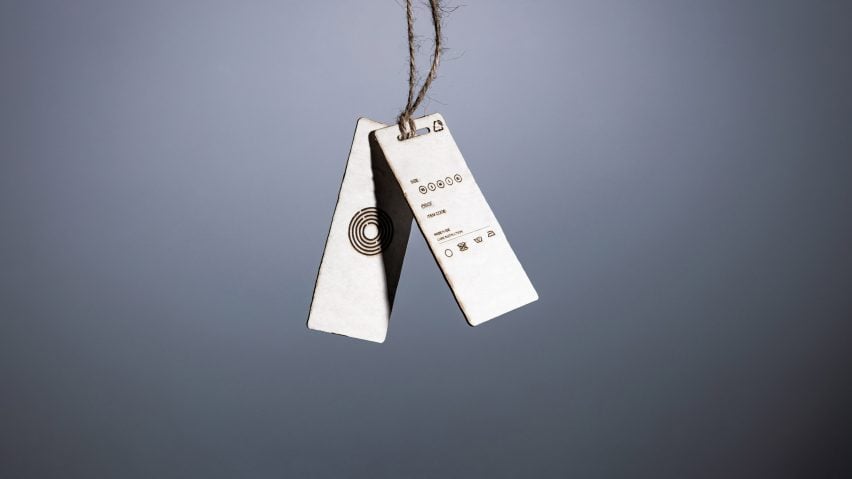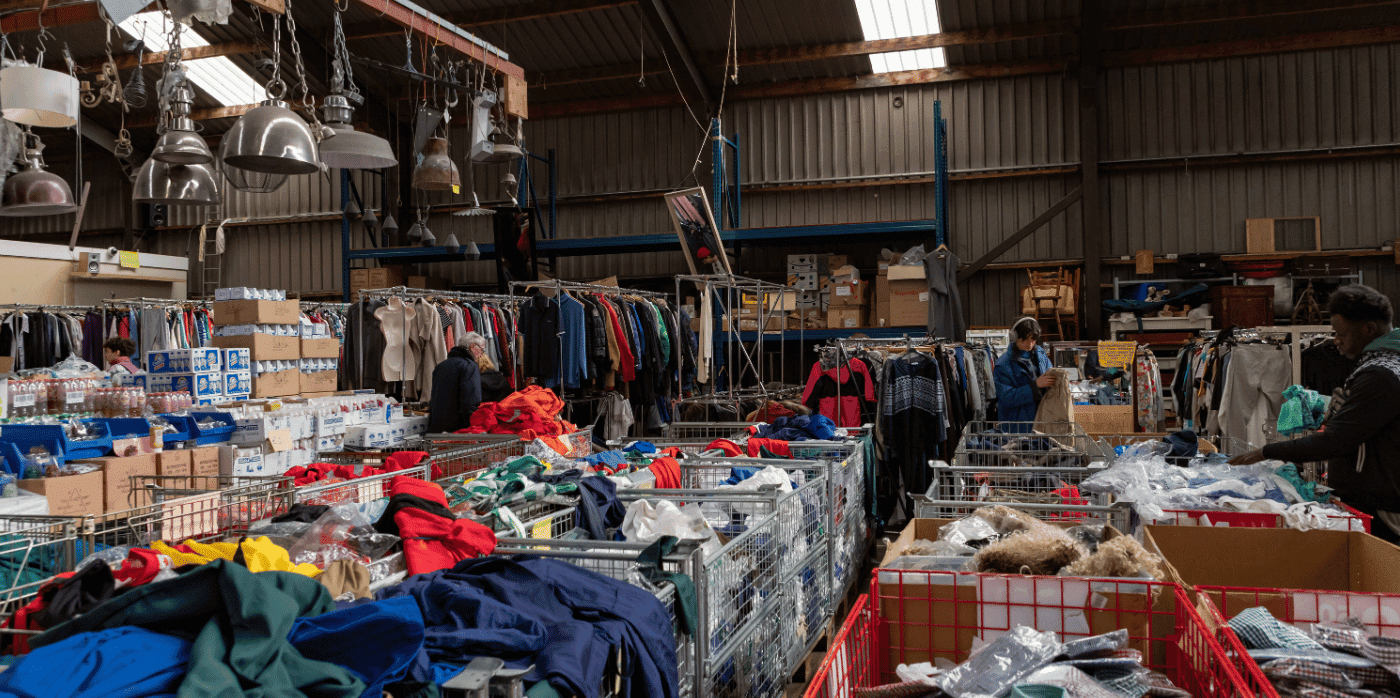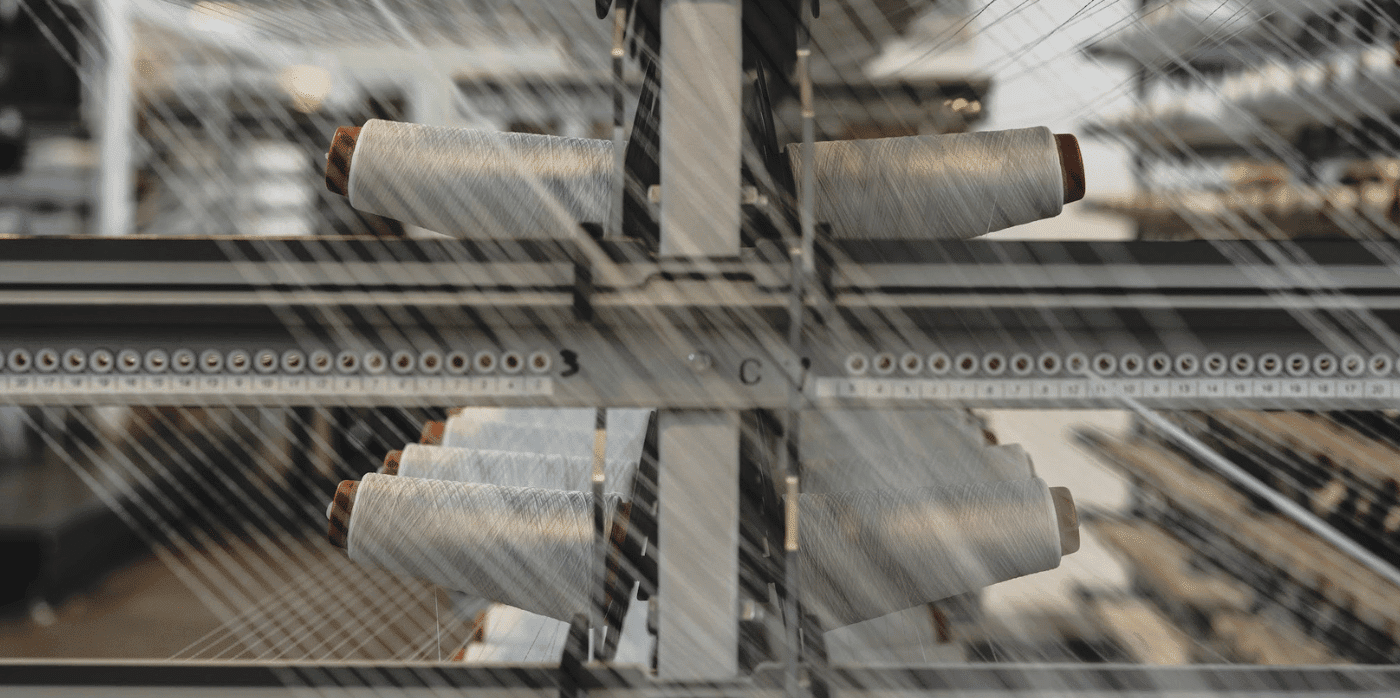Pulpatronics tackles single-use electronics with paper RFID tags
A group of design graduates from London’s Royal College of Art have come up with a way to make RFID tags entirely from paper, with no metal or silicon components in a bid to cut down on waste from single-use electronics.
Under their start-up Pulpatronics, the team has devised a chipless, paper-only version of a radio-frequency identification (RFID) tag – a type of electronic tracker that is attached to products and is most commonly found in clothing stores.
These types of tags have succeeded barcodes in many big retailers, where they allow self-checkout machines to “magically” identify items without scanning anything, while also facilitating inventory management and theft prevention.
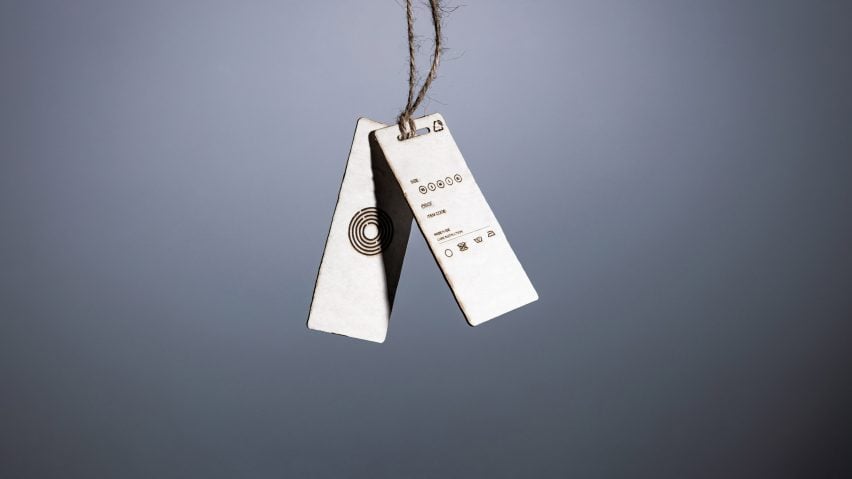
However, these types of tags – 18 billion of which are produced every year – are “overengineered”, according to Pulpatronics.
The devices rely on a circuit with a microchip and antenna, usually embedded into a sticker adhered to the paper swing tag. Due to the mix of paper, metal and silicon, they are unrecyclable and tend to end up in landfills.
By contrast, Pulpatronics’ alternative RFID design requires no other material than paper. The company simply uses a laser to mark a circuit onto its surface, with the laser settings tuned so as not to cut or burn the paper but to change its chemical composition to make it conductive.
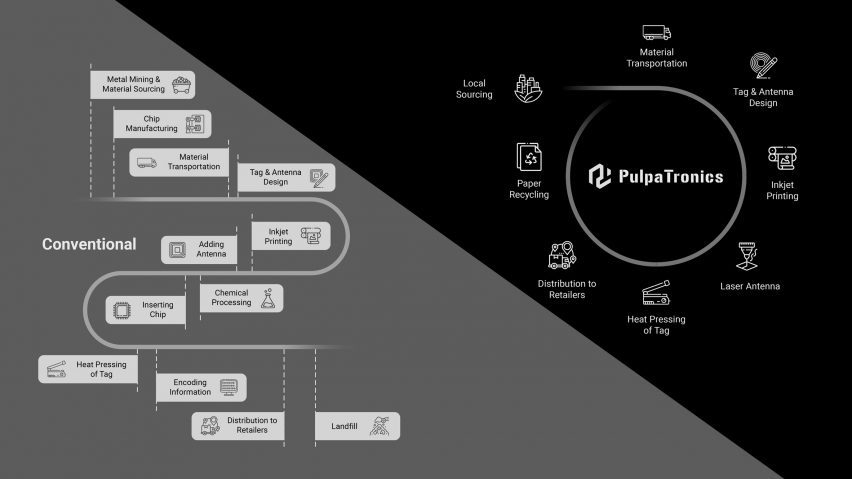
This circuit is carbon-based and the tag can be recycled with household waste as easily as a piece of paper marked with a pencil scrawl.
“This approach streamlines the manufacturing process, eliminates the need for metal and silicon components and significantly reduces the environmental footprint of RFID tag production as a result,” Pulpatronics said.
Pulpatronics estimates its tags will reduce carbon dioxide emissions by 70 per cent compared to standard RFID tags while halving the associated price for businesses.
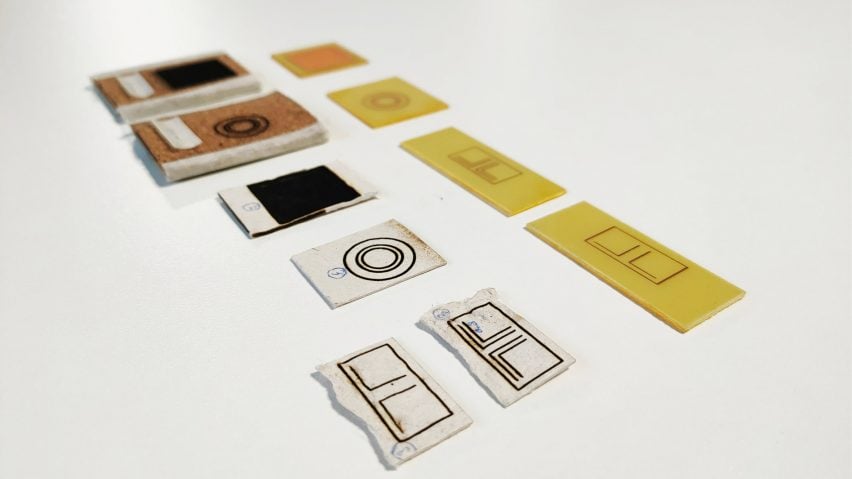
The company’s three co-founders came up with the idea for the RFID tags while working on a group project along with a fourth student as part of their Innovation Design Engineering masters course, jointly run by Imperial College London and the Royal College of Art.
Chloe So, Barna Soma Biro and Rui Ma have different backgrounds, ranging from engineering to biological sciences to fashion design, and wanted to consolidate their skills to come up with a design that would have a positive impact on the environment.
“Our approach was slightly different to the rest of the teams in our course,” said Biro, who is Pulpatronics’ tech lead. “We never really started with a problem and then tried to identify a solution to it as you would normally do in a conventional design process.”
“Rather, we investigated various types of interesting technologies that we thought were cutting-edge from a scientific perspective and then brainstormed around what we could create out of them by trying to stay aligned to our values of reducing waste and making technology more accessible,” he continued.
In addition to the paper circuitry, Pulpatronics also applied another of these experimental technologies to dispose of the RFID’s microchip, which is responsible for storing data about the item that is then communicated to the reader via an antenna.
Instead, the “chipless” Pulpatronics tag uses the geometric pattern of the circuit itself to convey the information. In the company’s concept designs, for instance, it’s a labyrinthine pattern of concentric circles.
“This mechanism is similar to barcodes and QR codes in the sense that the information is encoded geometrically, but it doesn’t need to be scanned visually,” said Biro. “It’s basically storing the information in the antenna.”
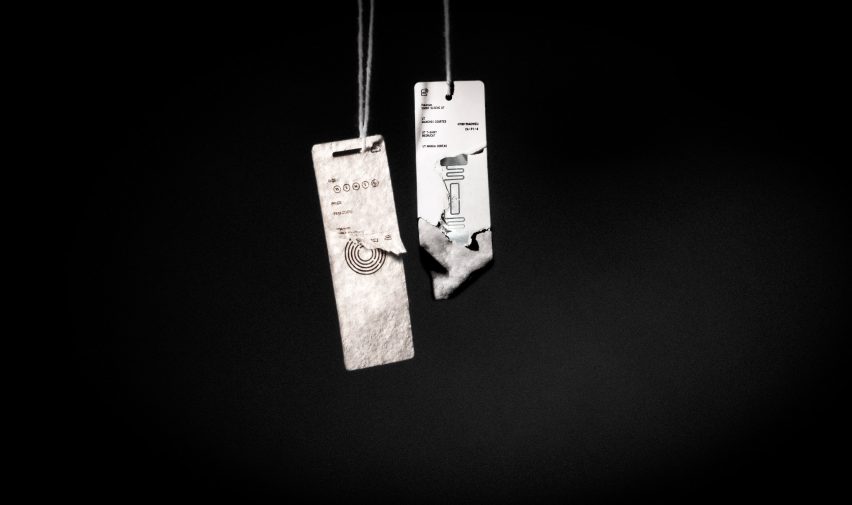
So far, Pulpatronics paper RFID tag has passed its first round of testing, where the technology was found to match the performance of a copper-based control RFID tag.
The company – which is longlisted for this year’s Dezeen Award in the sustainable design category – will now stress test the product, looking at its shelf life, durability and whether it is affected by environmental factors.
Pulpatronics is targeting the retail industry first, particularly smaller companies that have not yet made the switch to RFID due to cost. And a preliminary trial with a retail partner in the redeveloped Battersea Power Station is already on the horizon.
Pulpatronics is also pushing for the introduction of a new symbol to designate recyclable RFID tags and raise awareness about the environmental issue of e-waste generated from hidden electronics.
Other single-use electronics in circulation today include disposable vapes and digital pregnancy tests, which show the results of a paper strip test on a tiny screen.
Last year, Australian company Hoopsy launched a paper-based pregnancy test to tackle both the electronic and plastic waste created by these devices.

